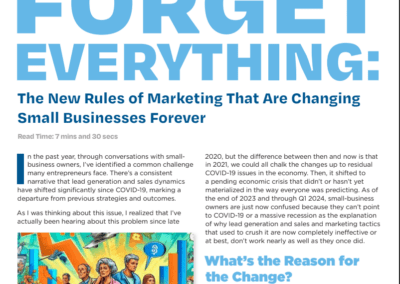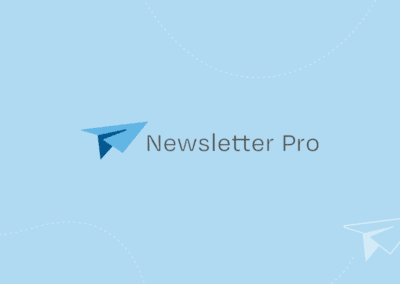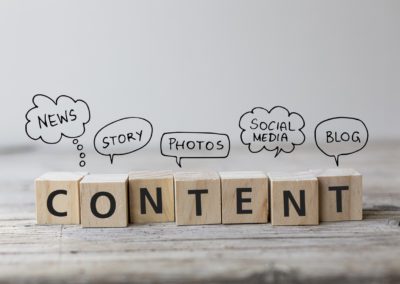In the ever-evolving digital landscape, businesses need to employ creative strategies to stand out and engage their audiences effectively. One powerful strategy is audience segmentation for newsletters. By segmenting your audience, you can send personalized and relevant content that resonates with your subscribers, thereby increasing engagement and boosting referral rates. In this article, we’ll explore the importance of segmenting your audience for newsletters and how it can lead to maximum referral impact.
What Is Audience Segmentation?
Audience segmentation is the process of dividing your email subscribers into smaller groups based on certain criteria. These criteria can include demographics, behaviors, interests, purchase history, and more. By categorizing your audience, you can tailor your newsletter content to meet the specific needs and preferences of each segment.

Why Is Audience Segmentation Important?
The importance of audience segmentation lies in its ability to deliver more personalized and relevant content to your subscribers. When your audience feels that the content they receive is directly relevant to them, they are more likely to engage with it. This increased engagement can lead to higher open rates, click-through rates, and ultimately, more referrals.
Benefits of Audience Segmentation
- Improved Engagement: Segmented newsletters have higher engagement rates because they cater to the specific interests and needs of each group.
- Increased Referrals: Personalized content encourages subscribers to share with their network, leading to more referrals.
- Higher Conversion Rates: By sending targeted messages, you can guide subscribers down the sales funnel more effectively.
- Better Customer Insights: Segmenting your audience allows you to gather valuable insights about your customers’ preferences and behaviors.
How to Segment Your Audience
To effectively segment your audience, you need to follow a strategic approach. Here are some essential steps to consider:
1. Analyze Your Audience
The first step in audience segmentation is to analyze your audience thoroughly. Gather data on demographics, behaviors, and preferences. Use analytics tools to understand how your subscribers interact with your content, what products or services they are interested in, and what their pain points are.
2. Define Segmentation Criteria
Based on your analysis, define the criteria for segmenting your audience. Common segmentation criteria include:
- Demographics: Age, gender, location, income level, etc.
- Behavioral Data: Purchase history, website activity, email engagement, etc.
- Psychographic Data: Interests, values, lifestyle, etc.
- Lifecycle Stage: New subscribers, loyal customers, lapsed customers, etc.
3. Use Segmentation Tools
Leverage email marketing platforms that offer segmentation features. These tools can help you automate the process of dividing your audience into specific segments based on the criteria you’ve defined. Platforms like Mailchimp, Constant Contact, and HubSpot offer robust segmentation capabilities.
4. Create Tailored Content
Once you’ve segmented your audience, create tailored content for each group. Customize your newsletters to address the unique needs and interests of each segment. Use personalized subject lines, recommendations, and offers to capture their attention.
5. Test and Optimize
Segmentation is an ongoing process that requires constant testing and optimization. Monitor the performance of your segmented campaigns and make adjustments as needed. Experiment with different content, timing, and frequency to see what resonates best with each segment.

Effective Segmentation Strategies
To maximize the impact of your segmented newsletters, consider implementing these effective strategies:
Demographic Segmentation
Segmenting your audience based on demographics is a straightforward approach. Tailor your content to match the age, gender, location, or other demographic factors of each segment. For example, if you have a segment of young adults, you might focus on trendy products or services that appeal to their lifestyle.
Behavioral Segmentation
Behavioral segmentation involves analyzing how subscribers interact with your brand. This could include their purchase history, website activity, or email engagement. Use this data to send targeted messages that align with their behavior. For example, if a subscriber frequently purchases eco-friendly products, you can send them newsletters highlighting your sustainable offerings.
Psychographic Segmentation
Psychographic segmentation goes beyond demographics and behaviors to consider the values, interests, and lifestyle of your audience. This approach allows you to create content that resonates on a deeper level. For example, if you know a segment of your audience values fitness and health, you can send newsletters with tips and products related to healthy living.
Lifecycle Stage Segmentation
Segmenting your audience based on their lifecycle stage helps you tailor content to their journey with your brand. New subscribers might receive welcome emails and introductory offers, while loyal customers could receive exclusive rewards or early access to new products. Lapsed customers might benefit from re-engagement campaigns to win them back.
Real-World Examples of Audience Segmentation Success
Many businesses have successfully implemented audience segmentation to boost their referral impact. For instance, an online fashion retailer segmented their audience by purchase history and sent personalized product recommendations to each segment. As a result, they saw a 30% increase in referral traffic and a significant boost in sales.
Another example is a software company that segmented their audience based on industry and sent tailored case studies and testimonials. This approach led to a higher engagement rate and more referrals from satisfied customers.
Conclusion
Segmenting your audience for newsletters is a powerful strategy that can lead to maximum referral impact. By understanding your audience and tailoring your content to meet their specific needs and preferences, you can increase engagement, drive more referrals, and ultimately, achieve better results for your business. Start implementing audience segmentation today and watch your newsletters transform into a valuable tool for growth and success.
Ready to Transform Your Newsletters?
If you’re ready to take your newsletters to the next level and achieve maximum referral impact, let Newsletter Pro help. Our team of experts specializes in crafting quality, personalized newsletters that captivate and engage your audience. Contact us today to see how we can elevate your email marketing strategy and drive real results for your business.






